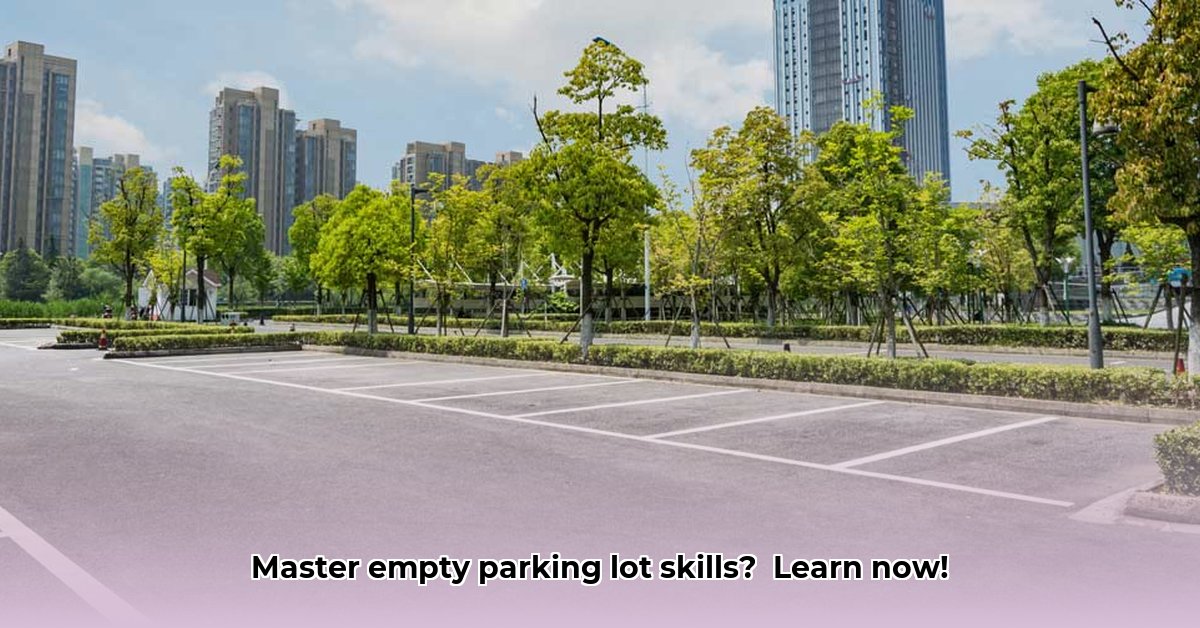
Learning to drive is exciting, but it's crucial to prioritize safety. Empty parking lots offer a fantastic, controlled environment to build your confidence and skills before venturing onto public roads. This guide will show you how to effectively use these spaces and progress to more challenging driving situations. We'll cover finding safe legal locations, mastering basic driving maneuvers, and ensuring you're following all necessary safety and legal regulations.
Finding Safe Practice Locations: A Risk Assessment
Choosing the right practice location is crucial. Consider the following factors when selecting a spot to hone your skills:
- Is the area truly empty? Even a seemingly deserted lot can have unexpected pedestrians, maintenance workers, or obstacles. A completely empty lot allows you to focus solely on driving.
- Lighting conditions: Practice during daylight hours for optimal visibility. Poor lighting increases the risk of accidents.
- Surface conditions: Look for a smooth, even surface free of potholes, bumps or other irregularities to avoid unexpected steering or braking issues.
- Legal access: It's critical to confirm that you have permission to drive in the chosen area. Many parking lots prohibit unauthorized vehicle use, leading to potential fines if you are caught. Always check signage clearly and, when in doubt, seek permission from the property owner. Check local regulations regarding driving practice in public areas as well.
Here's a risk assessment matrix to help you choose:
| Location Type | Accident Risk | Legal Risk | Pros | Cons |
|---|---|---|---|---|
| Empty Parking Lot | Generally Low (if truly empty) | Generally Low (but check signs!) | Controlled environment, minimal traffic, plenty of space to maneuver. | Might not perfectly replicate real-world driving conditions. |
| Quiet Residential Street | Low to Moderate | Low to Moderate (check speed limits) | Gradually introduces real-world elements like traffic signals and other vehicles. | Requires more alertness and awareness of surroundings; only suitable once basic skills are mastered. |
| Other Locations (e.g., Private Roads) | Varies greatly | Varies greatly | May offer different challenges and practice opportunities. | Always verify legality and safety before using; risks can be significantly higher. |
Remember, always check local regulations and obtain permission for private property. Ignoring these rules can lead to fines and legal issues.
Mastering Basic Driving Skills in a Parking Lot: A Step-by-Step Guide
Once you've found a safe, legal practice location, let's master the fundamentals:
Steering: Begin by driving slowly in a straight line, gently adjusting the steering wheel to get a feel for the car's responsiveness. Gradually increase speed, maintaining awareness of your surroundings.
Braking: Practice smooth, consistent braking at low speeds. Understand how your car reacts to different brake pressures. This is vital for safe reactions.
Turning: Start with wide turns, focusing on smooth steering and gentle acceleration. Once comfortable, practice tighter turns and U-turns. Consistent, controlled movements are key.
Parking: After mastering the basics, practice parking. Start with straight-line parking, then progress to parallel and angled parking. Use the parking lot lines as guides.
Progressing to More Complex Environments: A Gradual Approach
As your confidence grows, gradually transition to more challenging environments:
Quiet Residential Streets: These areas offer a good middle ground – introducing real-world elements like intersections and traffic signals, while maintaining a relatively low level of traffic congestion. Always drive at the posted speed limit and carefully scan for pedestrians and cyclists.
Less Congested Roads: Once you're comfortable on quiet streets, you can move to slightly busier roads during off-peak hours. Always prioritize safety over speed.
Remember, consistency is key. If at any point you feel uncomfortable, return to the parking lot for more practice. There's no rush; prioritize building safe driving habits!
Safety Precautions and Legal Considerations: Prioritizing Safe Driving
Adult Supervision: Always practice with a licensed adult who can provide guidance, feedback, and support. This dramatically reduces risks.
Obey All Traffic Laws: Always obey traffic laws, even in seemingly empty areas. This builds good habits and avoids legal consequences.
Local Regulations: Check local regulations regarding learner's permits and driving practice, especially concerning practicing on private property.
Awareness of Surroundings: Always scan your surroundings for pedestrians and cyclists. Being prepared for unexpected situations is crucial.
Conclusion: Consistent Practice Leads to Confident and Safe Driving
Consistent practice in a safe and controlled environment is crucial for developing the skills and confidence needed to be a safe driver. Remember to prioritize safety and always obey traffic laws. By combining safe practice locations with gradual progression, you can build the skills necessary for confident and responsible driving.